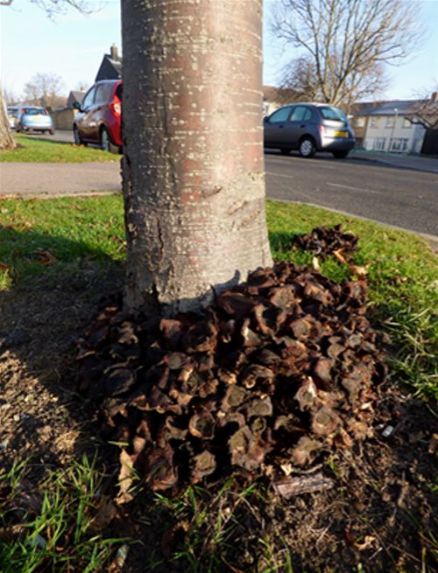Armillaria spp.
(A. gallica; A. mellea; A. ostoyae; A. tabescens)
Common name
Honey fungus.
Often found on
A large variety of deciduous and coniferous trees.
Sometimes found on
None.
Location
Generally found fruiting at and around the base of the host tree.
Description
A highly variable genus comprising of various species with their own variable morphology. Usually fruiting in clusters. Crudely, the stem (sometimes with a bulbous base) is generally white to fleshy yellow-beige, which may (or may not) have a full or partial ring (initially protecting the fleshy-beige gills as a veil) and can be somewhat rough. The cap is a brownish-beige to tan brown and often emerges roughened. Whitish spore. Blacken in over-maturity and senescence. White mycelial sheet present beneath the bark with black (bootlace) rhizomorphs (also in the soil).
Confused with
Significance
It is important to identify the exact species of honey fungus, prior to a full diagnosis. Generally considered pathogenic and able to enter via roots from the surrounding soil. Indicative of physiological stress and often a decline in vitality. Where targets exist, management considerations are required. The ubiquitous nature of honey fungus makes control difficult. Applying mulch to encourage more bespoke saprotrophic fungal diversity is useful though will not make a difference where a tree has already been colonised and this fungus is acting as a pathogen. In some cases, entire removal of the infected tree is justified, to remove available deadwood for further attack.









